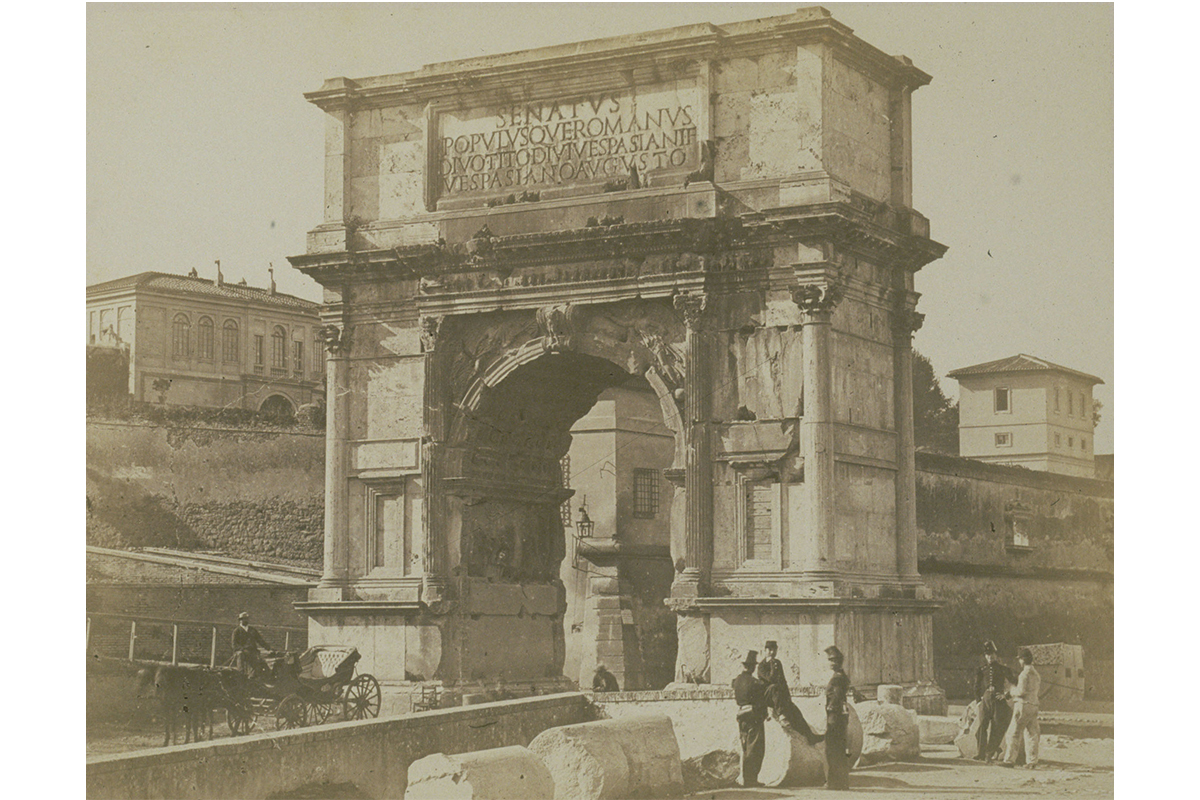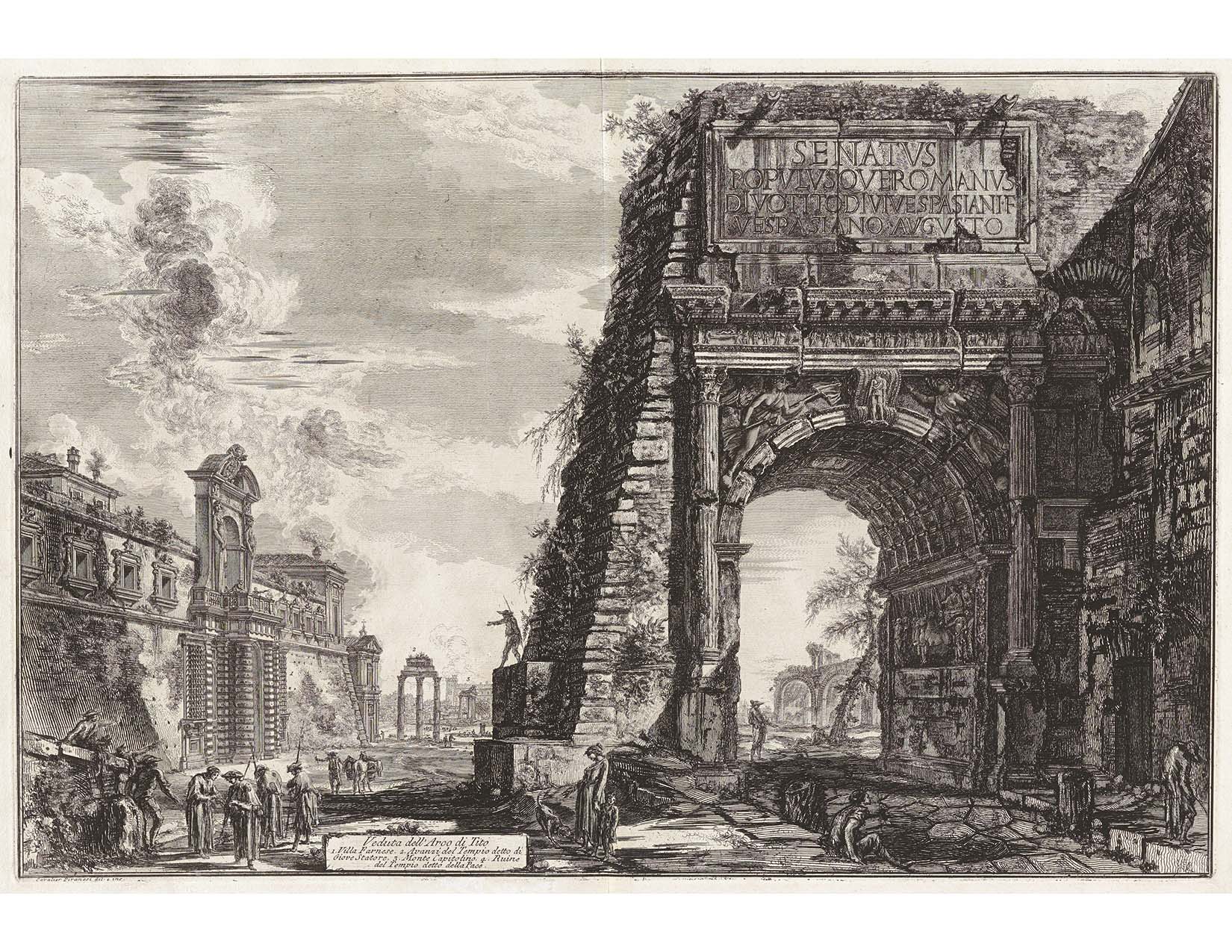
Collaboration with the Spatial Analysis Lab
Colleen McDermott is the Brown Post-Baccalaureate Curatorial Fellow in the Cunningham Center.
This fall, the Smith College Museum of Art will be opening the exhibition When in Rome: Prints & Photographs, 1550–1900. Using prints and photographs from both our own collection and that of the Yale University Art Gallery, When in Rome is a historical tour of the city's most renowned monuments, showing the many ways they have been pictured over time. This collaboration is a part of Yale's Collection-Sharing Initiative, which aims to lend works to academic museums to foster creativity and increase access to original art.

Giovanni Battista Piranesi. Italian, 1720–1778. Veduta dell’Arco di Tito (View of the Arch of Titus [with the Villa Farnese to the left]), from Vedute di Roma (Views of Rome), 1771. Etching. Yale University Art Gallery. The Arthur Ross Collection. 2012.159.11.98.
In a similar interdisciplinary spirit, the museum is teaming up with the Spatial Analysis Lab here at Smith to find the best ways to put these images in both spatial and historical contexts. Karen Yu '16, a student assistant at the SAL, has written a blog post on their work with us, including some examples of interactive maps we may use as a counterpart to the exhibition. Check it out--and get excited to see the show in the fall!